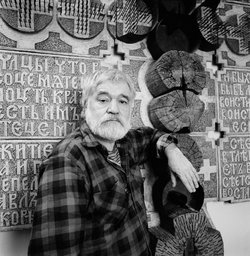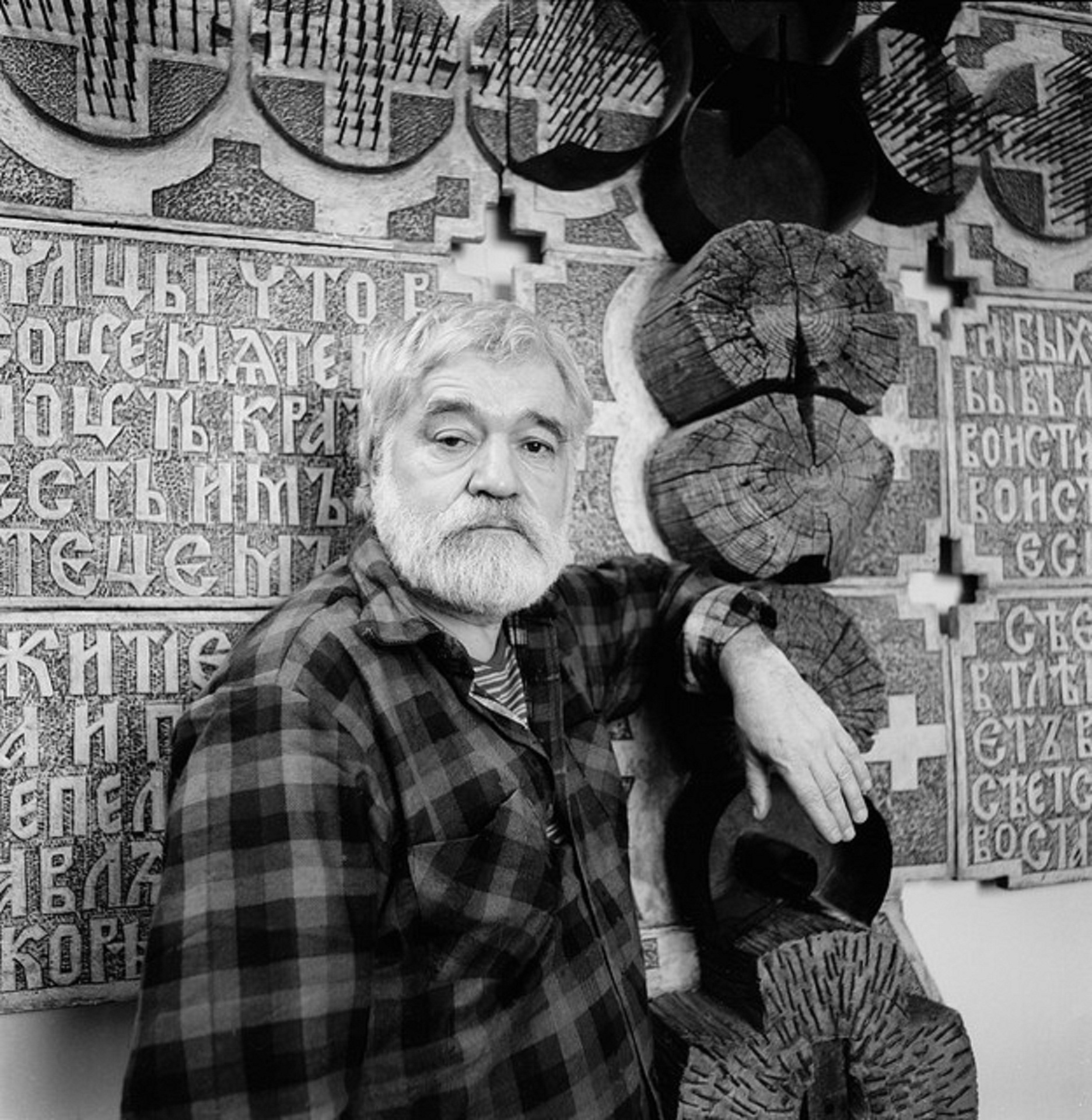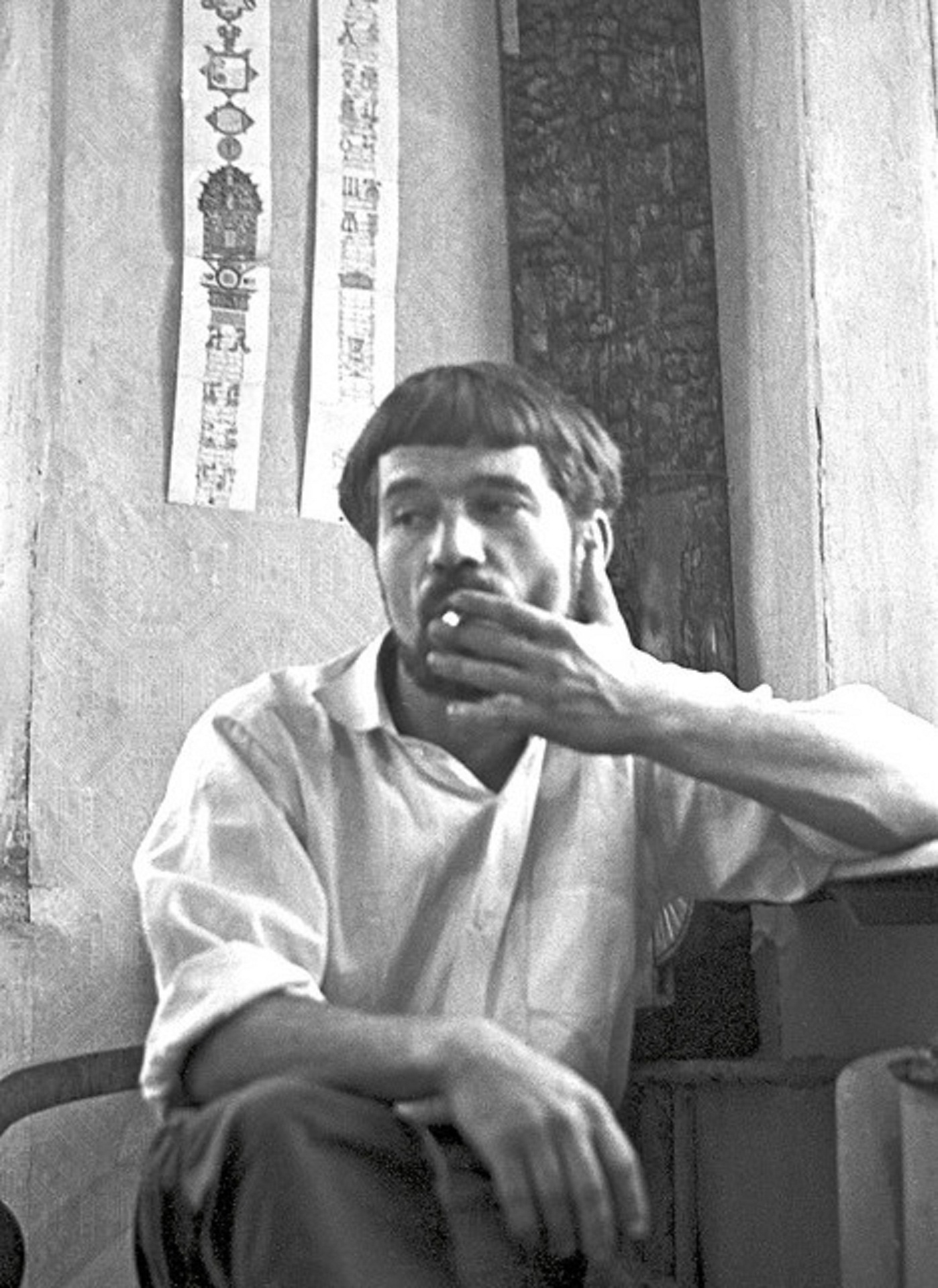MOSCOW.- It is with great sadness SDZY Contemporary announces the passing of Dmitri Plavinsky, a critically important figure during the Nonconformist Art movements in the Soviet Union and, overthrowing the State-enforced mandates of Socialist Realism, was a pivotal force in the developing of Contemporary Russian Art.
Like many of his peers, due to restrictions enforced by the governing political regime, Plavinsky was virtually unknown in the art industry outside of Nonconformist circles during much of his career; still, his works were one of a very select few Nonconformist works to be shown overseas, beginning at the The Museum of Modern Art (MoMA) in the 1974 exhibition "Contemporary Soviet Art" and in The Metropolitan Museum's 1977 exhibition "Russian and Soviet Art".
"He was a pioneer, an artist who remained true to his own principles and refused to be deflected by political and commercial pressures," said Dr. John E. Bowlt, Director of the Institute for Modern Russian Culture and the leading author and expert on 20th Century Russian Art. Dr. Bowlt's forthcoming volume "A Century of Russian Art: 1900-2000" is being released next year.
Another expert on Plavinsky and his work, Dr. Michael Mezzatesta, the Mary D.B.T. Semans and James H. Semans Director of the Duke University Nasher Museum of Art, described the late artist "as one of the greats." "Dmitri Plavinsky's art was as broad as the Steppes and as deep as the Russian soul. Through the dark times of the 'Great Experiment' and beyond, he probed the roots of the Russian spirit. He never lost faith in its strength or historical richness. Plavinsky's art remains a lasting legacy to one of the Motherland's greatest artists of his generation."
Today, Plavinsky is considered one of the most recognized Contemporary Russian Artists of his time, with significant works now permanently housed in The Metropolitan Museum of Art, The Museum of Modern Art (MoMA), the Museum Ludwig in Koln, and on permanent display in every major museum in Russia; in the commercial arena, his works continued in recent years to bring record prices for the artist at such venerable auction houses such as Sotheby's and Christies.
Born April 28, 1937 in Moscow, Russia, Dmitri Petrovich Plavinsky graduated from the Theater Department of the State Academic School in Memorium of 1905, in 1956. An active member of the Nonconformist art community, he mastered various mediums including painting, etchings, and mixed media. Because of his controversial and revolutionary creative output, he was not permitted to join the Moscow Union of Artists - a necessity in order to "officially" work as an artist, sell art, and have a studio under Soviet mandate - until many years later in 1978. Avoiding the difficult post-Perestroika years, the artist moved to New York City in 1992. In 2004, he returned to reside and work in Moscow.
In 2001, Rizzoli Publishers published an extensive English-language monograph on the artist.
Plavinsky, at the age of 76, died September 1, 2012, of a heart attack in Moscow, Russia. He is survived by his wife, Masha, in Moscow, and daughter, Lisa, in Moscow.
MOSCOW.- It is with great sadness SDZY Contemporary announces the passing of Dmitri Plavinsky, a critically important figure during the Nonconformist Art movements in the Soviet Union and, overthrowing the State-enforced mandates of Socialist Realism, was a pivotal force in the developing of Contemporary Russian Art.
Like many of his peers, due to restrictions enforced by the governing political regime, Plavinsky was virtually unknown in the art industry outside of Nonconformist circles during much of his career; still, his works were one of a very select few Nonconformist works to be shown overseas, beginning at the The Museum of Modern Art (MoMA) in the 1974 exhibition "Contemporary Soviet Art" and in The Metropolitan Museum's 1977 exhibition "Russian and Soviet Art".
"He was a pioneer, an artist who remained true to his own principles and refused to be deflected by political and commercial pressures," said Dr. John E. Bowlt, Director of the Institute for Modern Russian Culture and the leading author and expert on 20th Century Russian Art. Dr. Bowlt's forthcoming volume "A Century of Russian Art: 1900-2000" is being released next year.
Another expert on Plavinsky and his work, Dr. Michael Mezzatesta, the Mary D.B.T. Semans and James H. Semans Director of the Duke University Nasher Museum of Art, described the late artist "as one of the greats." "Dmitri Plavinsky's art was as broad as the Steppes and as deep as the Russian soul. Through the dark times of the 'Great Experiment' and beyond, he probed the roots of the Russian spirit. He never lost faith in its strength or historical richness. Plavinsky's art remains a lasting legacy to one of the Motherland's greatest artists of his generation."
Today, Plavinsky is considered one of the most recognized Contemporary Russian Artists of his time, with significant works now permanently housed in The Metropolitan Museum of Art, The Museum of Modern Art (MoMA), the Museum Ludwig in Koln, and on permanent display in every major museum in Russia; in the commercial arena, his works continued in recent years to bring record prices for the artist at such venerable auction houses such as Sotheby's and Christies.
Born April 28, 1937 in Moscow, Russia, Dmitri Petrovich Plavinsky graduated from the Theater Department of the State Academic School in Memorium of 1905, in 1956. An active member of the Nonconformist art community, he mastered various mediums including painting, etchings, and mixed media. Because of his controversial and revolutionary creative output, he was not permitted to join the Moscow Union of Artists - a necessity in order to "officially" work as an artist, sell art, and have a studio under Soviet mandate - until many years later in 1978. Avoiding the difficult post-Perestroika years, the artist moved to New York City in 1992. In 2004, he returned to reside and work in Moscow.
In 2001, Rizzoli Publishers published an extensive English-language monograph on the artist.
Plavinsky, at the age of 76, died September 1, 2012, of a heart attack in Moscow, Russia. He is survived by his wife, Masha, in Moscow, and daughter, Lisa, in Moscow.
Sponsored by Ancestry
Advertisement
Records on Ancestry
Sponsored by Ancestry
Advertisement



